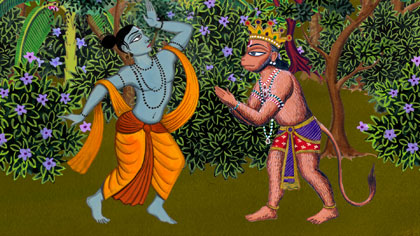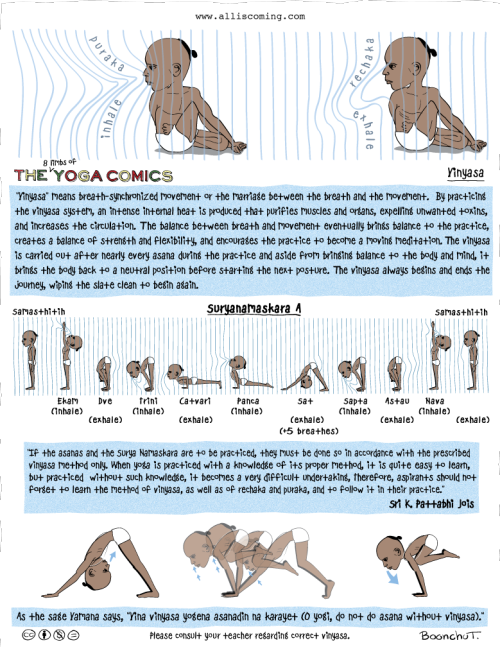Life happens. Relationship troubles, financial troubles, work troubles, the weather, illness, digestion troubles, injuries... In yoga, all these things and more are summed up as the "three miseries" or "three obstacles". They are:
Eventually, practice becomes the baseline, the steady beat of our lives. Before that, each time an obstacle arises, we ask ourselves "should I practice if...?" It is in this moment when we begin to explore our intentions and the meaning of the practice. This is the moment when a lot of people - confusing yoga with the mere performance of asanas - quit. This is also the moment when others start to question their motivations and show up anyway.
To anyone who has ever shown up anyway, started from the ground up, or who has fallen to rock bottom from the highest cliff knows the feeling. The infinite sorrow, the despair, the irrational impossibility... and then when we are patient just a few moments later, the warmth of humility and the curious strength of complete surrender. It is the relief of having nothing to prove, no expectations, and nothing but the here and now. All of a sudden it all comes together - the showing up, the exploration of what the asana practice is really asking, the patience of being sensitive and receptive - and it starts to seep into every other part of our lives. We start to make connections between all of our actions throughout the day and the world around us. The definition of asana as a "steady and sweet seat" becomes the establishment of a constant steady and sweet connection with the earth. We start to realize that we can always practice and that the effort toward steadiness of mind is what we have been cultivating all along.
In times of injury or bodily obstacle, our asana practice may change, but it is important to remember that there are 7 other limbs of Ashtanga yoga that can be practiced all the time. But this post is about injuries and here are some sources of inspiration if you are finding yourself grappling with bodily obstacles:
"Breathing the practice" by Jangalikayamane
"Healing injuries with Ashtanga Yoga" by Paul Mitchell Gold
One final note: everything is relative. An emotional blow feels 100% as devastating to the person experiencing it as a broken arm feels to the person experiencing the broken arm. Just show up. Identify with the true nature of the self. Let go of the asanas. Make showing up to practice about others and something larger than yourself (Ishvarapranidhana). Showing up anyway is a chance to add to the group energy, to inspire others who are also having a tough time. It is a chance to be grateful and for tapas... for it often takes some serious obstacles for us to open to the possibility of yoga.
adhyātmika --miseries of body and mindThese names are old and the miseries timeless. They will always come to us and they always have. If we wait to practice until the obstacles stop, then we will probably never practice. It is easy to do some asanas when we feel nice and there is a nice view and the teacher is nice and there was no traffic and we get the spot we like and everything is going well. We should definitely be grateful and notice when we have it easy. But often it is when things are not going well, when things are very hard or seem impossible when the true meaning of yoga is there for us to realize. It is then when we have the opportunity to really practice and to rise to the occasion.
adhibhautika --miseries from other living creatures
adhidaivika --miseries from natural/supernatural disturbances
Eventually, practice becomes the baseline, the steady beat of our lives. Before that, each time an obstacle arises, we ask ourselves "should I practice if...?" It is in this moment when we begin to explore our intentions and the meaning of the practice. This is the moment when a lot of people - confusing yoga with the mere performance of asanas - quit. This is also the moment when others start to question their motivations and show up anyway.
To anyone who has ever shown up anyway, started from the ground up, or who has fallen to rock bottom from the highest cliff knows the feeling. The infinite sorrow, the despair, the irrational impossibility... and then when we are patient just a few moments later, the warmth of humility and the curious strength of complete surrender. It is the relief of having nothing to prove, no expectations, and nothing but the here and now. All of a sudden it all comes together - the showing up, the exploration of what the asana practice is really asking, the patience of being sensitive and receptive - and it starts to seep into every other part of our lives. We start to make connections between all of our actions throughout the day and the world around us. The definition of asana as a "steady and sweet seat" becomes the establishment of a constant steady and sweet connection with the earth. We start to realize that we can always practice and that the effort toward steadiness of mind is what we have been cultivating all along.
In times of injury or bodily obstacle, our asana practice may change, but it is important to remember that there are 7 other limbs of Ashtanga yoga that can be practiced all the time. But this post is about injuries and here are some sources of inspiration if you are finding yourself grappling with bodily obstacles:
"Breathing the practice" by Jangalikayamane
"Healing injuries with Ashtanga Yoga" by Paul Mitchell Gold
One final note: everything is relative. An emotional blow feels 100% as devastating to the person experiencing it as a broken arm feels to the person experiencing the broken arm. Just show up. Identify with the true nature of the self. Let go of the asanas. Make showing up to practice about others and something larger than yourself (Ishvarapranidhana). Showing up anyway is a chance to add to the group energy, to inspire others who are also having a tough time. It is a chance to be grateful and for tapas... for it often takes some serious obstacles for us to open to the possibility of yoga.






